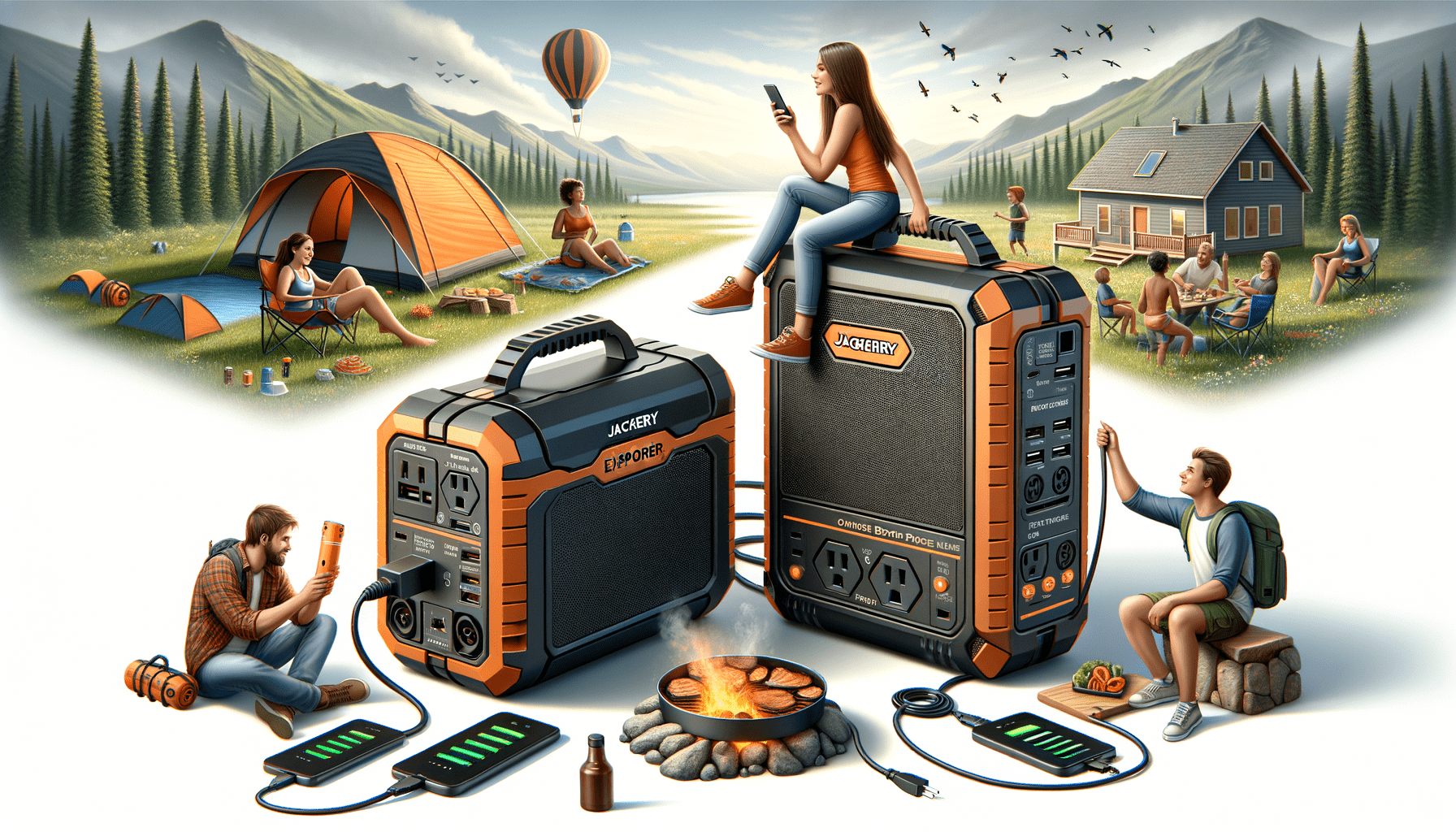Looking to keep your devices powered up during your outdoor adventures or in case of an emergency? The power station market is filled with options, but today we’re focusing on two popular picks: the robust Jackery Explorer 3000 Pro and the compact EcoFlow River Mini. Let’s dive into the nitty-gritty of these portable powerhouses to help you decide which one meets your needs.
Capacity and Power
Battery Capacity
The Jackery 3000 Pro boasts a hefty 3024Wh battery that’s designed to power nearly anything you throw at it, from small appliances to heavy-duty tools. In contrast, the EcoFlow River Mini is more modest with a 210Wh capacity, making it better suited for charging smaller gadgets like phones, tablets, and laptops.
Output Capabilities
When it comes to keeping the lights on, the Jackery comes out ahead with a continuous output of 3000W, peaking even higher for energy-hungry devices. The EcoFlow River Mini, on the other hand, offers a pure sine wave output of 300W with a 600W surge capability – enough for your basics but not intended for larger appliances.
Charging and Solar Capabilities
Charging Times
Time is of the essence when you’re off-grid. The Jackery Explorer 3000 Pro impresses with a wall charging time of just 2.4 hours, thanks to its ultra-fast charging technology. The EcoFlow River Mini isn’t far behind, hitting a full charge in 1.5 hours via an AC source. Both units offer solar charging options, with the Jackery requiring 6-7.5 hours and the River Mini 3-6 hours under ideal conditions.
Solar Panel Compatibility
Harnessing the power of the sun, both the Jackery and EcoFlow are compatible with solar panels. The Jackery Explorer 3000 Pro makes use of its industry-leading solar conversion technology, while the River Mini keeps things efficient and eco-friendly with support for up to 100W solar input.
Design and Portability
The Jackery Explorer 3000 Pro doesn’t shy away from its substantial size but mitigates this with a built-in pull rod and wheels for easy transportation. The EcoFlow River Mini is the featherweight in this comparison, weighing in at a mere 6.3lbs, and is designed to be effortlessly portable.


Additional Features and Considerations
Both power stations feature smart app control, allowing you to monitor and manage your power usage remotely. The Jackery has a cool edge in colder environments with a functional range down to -20°C, while the River Mini covers you with a slightly wider temperature margin for charging. Safety wise, both come equipped with advanced BMS systems to keep you and your devices secure.
Head-to-Head Technical Specifications
| Feature | Jackery Explorer 3000 Pro | EcoFlow River Mini |
|---|---|---|
| Battery Capacity | 3024Wh | 210Wh |
| Weight | 63.93 lbs | 6.3 lbs |
| Continuous Power | 3000W | 300W |
| Peak Power | Higher surge capability | 600W surge |
| Solar Charging Time | 6 – 7.5 hours | 3 – 6 hours |
| Wall Charging Time | 2.4 hours | 1.5 hours |
| Temperature Tolerance | -20°C to 45°C | -20°C to 45°C |
| App Control | Yes | Yes |
| Safety Features | Advanced BMS | Advanced BMS |
| Compatible with Solar Panels | Yes | Yes |
Ultimately, the choice between the Jackery Explorer 3000 Pro and the EcoFlow River Mini comes down to your power needs and lifestyle. The Jackery is a clear win for heavy-duty power in demanding environments, while the River Mini shines in its portability and quick charging for everyday electronics. Whichever you choose, you’ll be more than ready for your next power adventure or emergency backup situation.


Leave a Reply